Reusing Compost: 3 quick ways to recycle it
 Lee Burkhill: Award Winning Designer & BBC 1's Garden Rescue Presenters Official Blog
Lee Burkhill: Award Winning Designer & BBC 1's Garden Rescue Presenters Official Blog

Updated 2023: Compost is the life force of many gardens. Whether buying it in bags from the garden centre (hopefully peat-free) or making your own with composting bins, this black gold is a multi-purpose wonder feed for the garden. However, most gardeners I speak to don't know what to do with compost once it's finished feeding your plants or once plants in containers have died back.
This guide will show you how to save money and improve your growing potential by resuing compost.
This page contains affiliate links for products I use and love. If you take action (i.e. subscribe, make a purchase) after clicking a link, I may earn some gardening commission which helps me keep the Garden Ninja Blog free for all.
Yes, you can! Compost is nature's way of recycling dead plants and organic leafy matter into a rich dark growing media. Which, when broken down, is rich in nutrients and moisture retentive.
Compost isn't the same as soil. It's a much richer growing material for fruit, vegetable and container gardening, allowing plants to easily root and access water and nutrients compared to complex soil.
Whilst compost will deplete over time, there's nothing stopping you from getting every last bit of goodness out of it. This guide will show you how you can reuse compost in a number of different ways.
Over time old compost will:
Most compost manufacturers or garden centres will urge you to replace compost each year. Of course, they will. They want to sell more! Most compost starts to lose its macro and micronutrients within a few weeks of being planted into. Those hungry plants will soon start to absorb the goodness of compost as it gradually degrades over time.
But did you know you can revive or boost old compost for another years use? There are a few tricks you can use to help increase the lifespan of old compost.
The best way to do this is by the following:
Yes, you can. Though you need to check that your plants were healthy and had no diseases, viruses or soil bourne pests. Like lily beetle or mealy bugs.
When it comes to reusing compost from vegetables such as tomatoes, the likelihood is that most of the nutrients will have been used up. So either top up with fertiliser or reuse it for less intensive plants like herbaceous perennials or as a top dressing for your garden borders to help implode soil structure.
There's a variety of different uses for recycling compost, so I thought it was a good time to share my top 3 uses for spent compost!
A number of people confuse compost with garden soil. The two are very different.
Soil is a mix of 5 key ingredients that are naturally occurring:
Compost on the other hand, is a man-made material made from organic matter usually found in the garden. It is usually made of a mix of green matter (nitrogen-rich clippings) and brown (carbon-based) material such as twiggy woodier material.
Compost creates a highly nutritious material that breaks down over time. When this breaks down into the soil it becomes humus (not the same as the delicious chickpea-based snack).
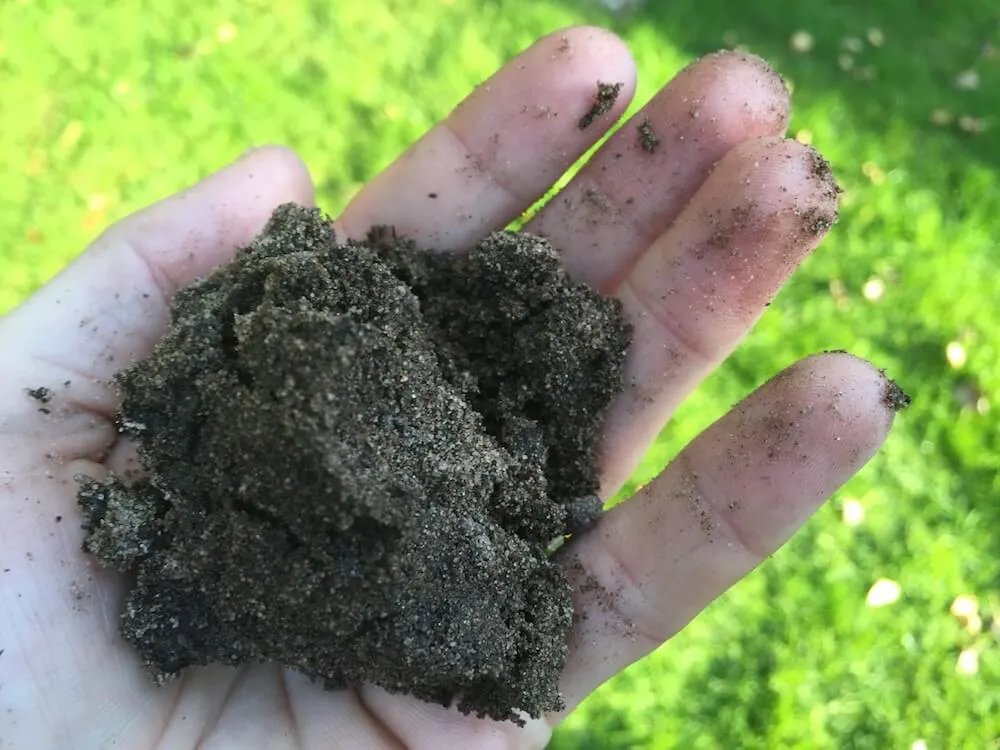
Soil is a mix of 5 naturally occurring ingredients. Stable and able to support plants for their lifetime.
Compost is absorbed by the soil, used to feed plants, retain moisture and act as a temporary growing media. It has a limited shelf life as it degrades and breaks down. So, the soil is the stable matter that plants live and establish in, whereas compost is a temporary growing medium that eventually needs replacing or replenishing, unlike soil.
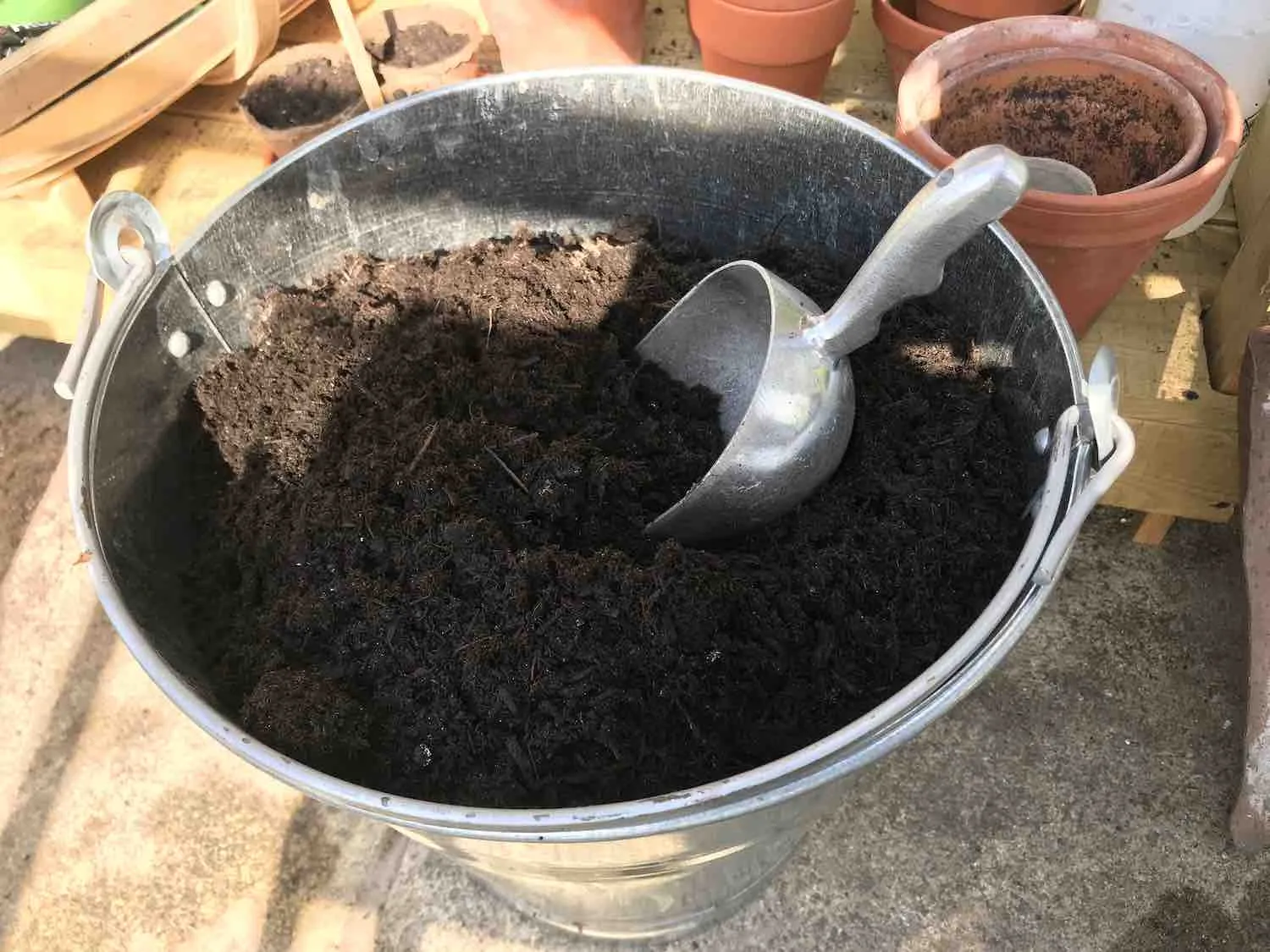
Compost: dark, rich and nutritious! A short-lived fuel boost for plants and organisms to feed off.
Did you know that you can take my course and learn how to become a Garden Ninja yourself? Click here for details
As conscientious, ethical gardeners, we should always seek to reduce, reuse and recycle wherever possible. There is no point in getting closer to nature to then, conversely, place more of a burden on poor mother nature.
By reducing our demands on the environment, we are also helping to protect and nurture our green spaces. It's also far better to reuse things in the garden than have to pay someone to take them away. It's a win-win!
Compost believe it or not can still have many uses after plants have been grown in it. It still helps improve soil structure, retain moisture and add small amounts of nutrition to the soil in our gardens.
So let's have a look at my top 3 uses for old spent compost.
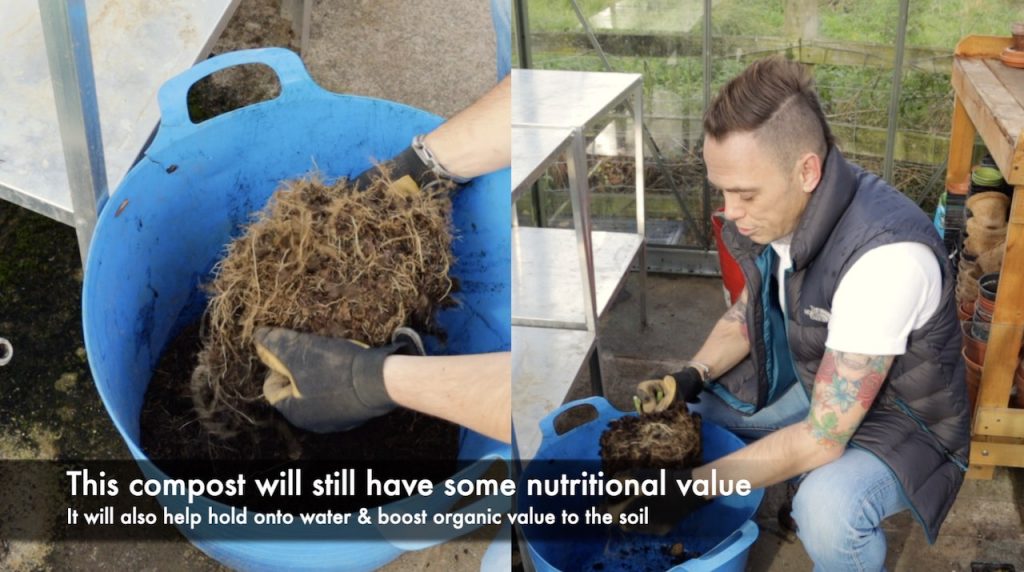
Removing old spent plants or weeds enables you to loosen old compost so it's usable again.
You'd be surprised how often people ask me whether to take out dead or spent annual plants from compost. The answer is yes. You can prepare your spent composted containers by lifting out the old dead plants and weeds.
Shake off as much compost as possible, then either compost or dispose of the old plant rootstock by cutting it up with secateurs first so it breaks down easily.
Perennial weeds can be hot composted or placed in a bucket for 6 weeks and then strained to make weed tea (a liquid feed for the garden).
You can also use a griddle, riddle or garden sieve to filter out any bits of old dead root or debris from your spent compost.
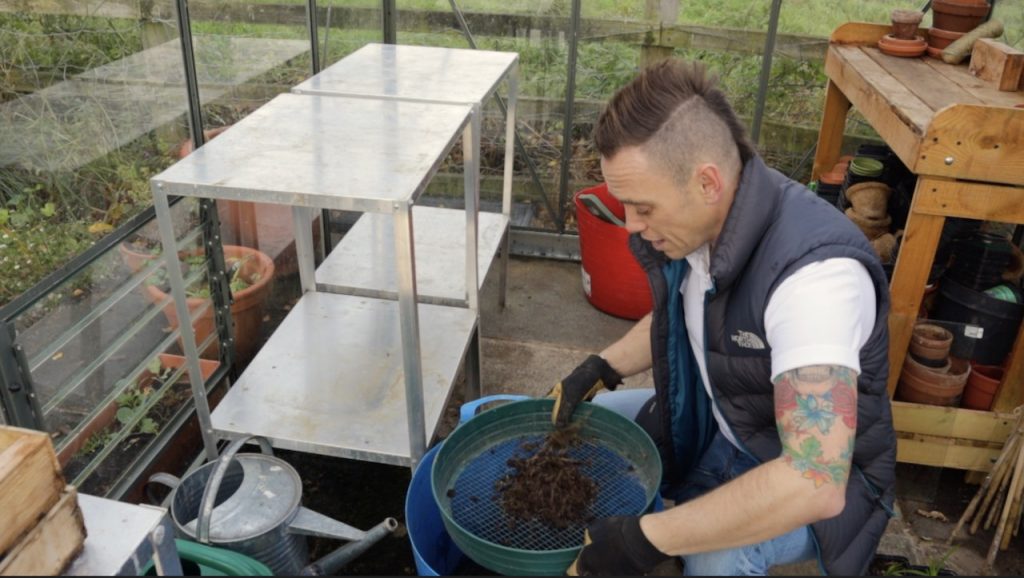
Sieving old compost removes old roots or bits of debris shown above.
It's worth noting that if your plants have had known pathogens, diseases or issues during the growing year, such as blight. You shouldn't reuse this compost as it can further infect other plants. Use your judgement if you think your compost may be harbouring nasties. For most gardeners, your used compost will be fine as known issues will have been very apparent by looking at the previous plant's health.
If you've been following my work for some time, you'll know that I love nothing more than to mulch my garden borders. Mulching helps reduce weeds, improve soil structure and can help reduce watering. It's also a lovely mindful low drama gardening activity.
Used compost is an excellent organic material to help lock in moisture and provide a slow-release feed to flower beds. Even the most tired compost will help improve rich soil texture and help provide a better 'crumb' structure to your garden soil.
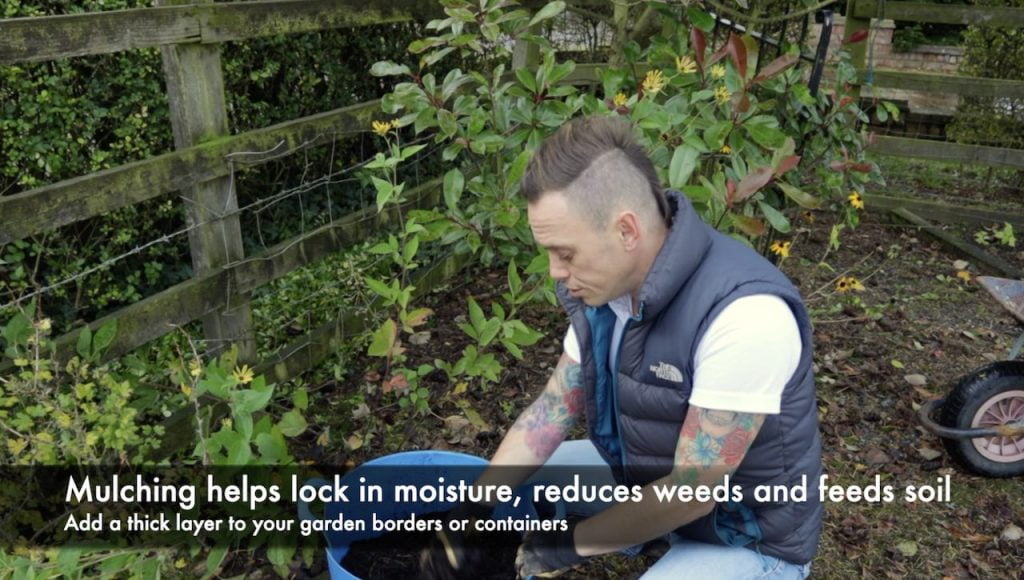
If you need any more convincing, here's my garden mulching guide in more step-by-step detail!
One of my best secret tips is to use spent compost as a lawn seed hack to help germination. I've even trialled this method versus the traditional lawn seeding method where the seed is scattered and then pressed on the soil. However, this leaves lawn seed prey to hungry birds and can mean that the seed never gets the optimal moisture to germinate effectively.
My top tip after reseeding a lawn, whether as a new lawn or lawn repair, is to sieve used compost lightly over the seed. Then water well.
What happens is the compost holds onto the moisture far longer than the bare soil will, meaning that the seed imbibes water (needed for germination) far faster. I also find that by scattering compost over the lawn seed, it is easier to spot the grass seed as it sprouts.
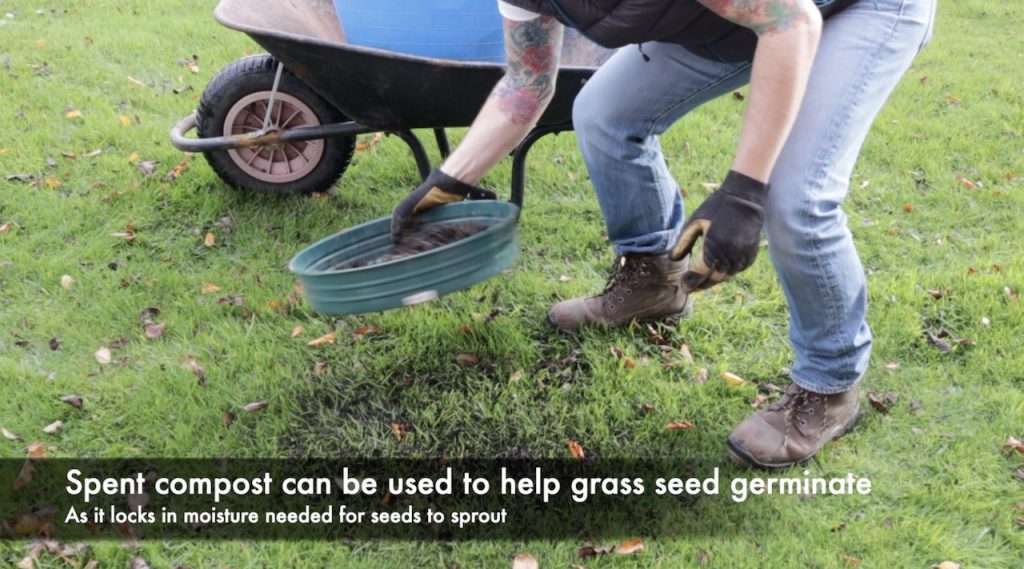
As the used compost is low in fertility, it won't affect the viability of the seed as a rich compost might. It also can be used as a wonderful lawn top dressing to help improve soil structure and lightly fertilise your lawn.
Whether you already have a compost heap or are about to start a new one, used compost is a great way to give it a boost. The beneficial bacteria already present in used compost can help speed up your home composting methods.
With a new compost bin, first mix some green (nitrogen-rich) material and brown (carbon-rich material) and then mix in some used compost. This will help create the perfect environment needed for the material to break down. As the used compost retains more moisture, it also stops your compost bin from drying out, which can then slow down the composting process.
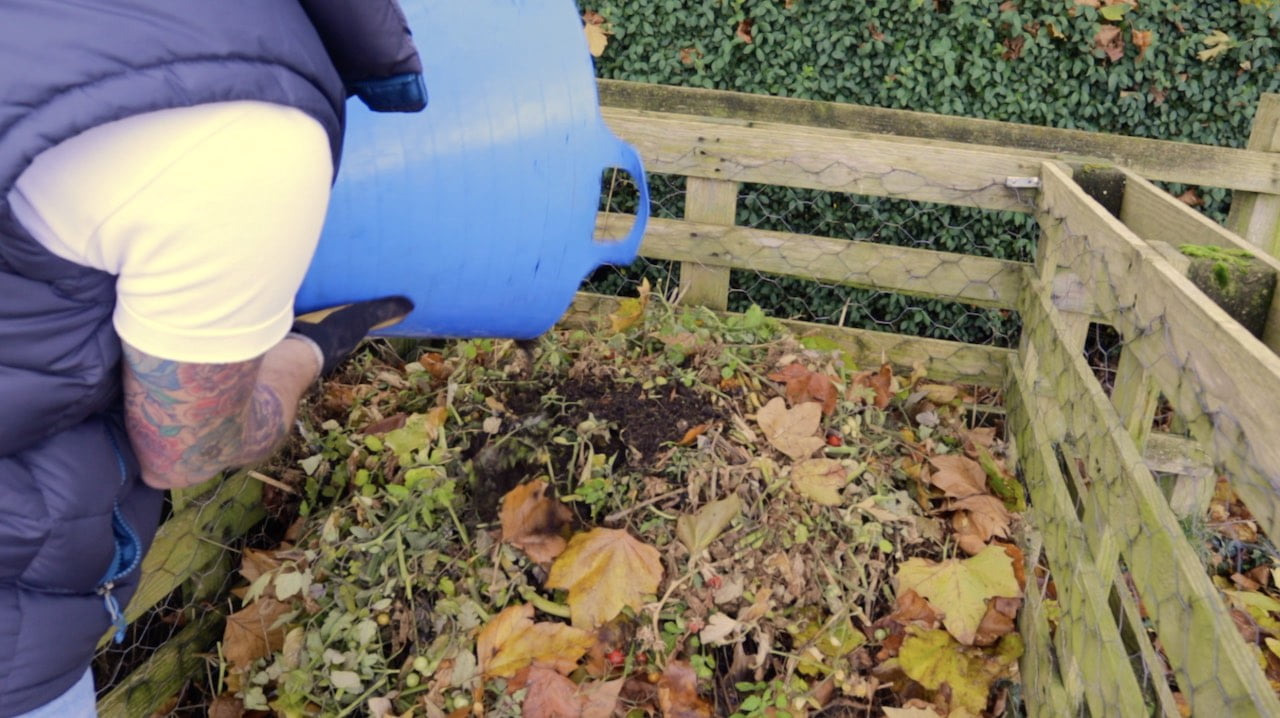
Spent compost is a great compost heap booster!
I've also used old compost to help improve compacted or smelly compost heaps. Usually, when too much nitrogen-rich matter, such as grass clippings, causes the compost pile to stagnate. You don't need much, just enough to help your compost bin along. It can be beneficial to turn it into the existing pile to spread it around rather than just layering it on top.
Composting is a brilliant way to recycle all sorts of garden material from prunings, lawn clippings and growing your own vegetables. This in turn, ends up in a cycle of recycling, reusing, etc. Drastically reducing your garden waste! if you're thinking of starting a new compost bin, my guide below should help set you up for composting success!
There are a few instances where spent or used compost is not be suitable for reuse. Whilst pretty rare here are some scenarios when you shouldn't reuse spent compost:
If plants grown in the compost suffer from any fungal, bacterial, or viral diseases, it's best not to reuse the compost to avoid spreading the pathogens to new plants. This is particularly important for diseases that can persist in the soil, such as certain types of root rot or wilt diseases. Usually quite rare for most gardeners, this wouldn't be a Garden Ninja expert post if I didn't give you both sides of the compost story!
In particular, the following diseases can stay present in the soil and compost for years if not removed:
Spent compost that has been infested with pests like nematodes, larvae, or insect eggs should not be reused, as these pests can cause damage to new plantings. Common pests include vine weevils, root-knot nematodes, and various types of larvae.
Spent compost may contain weed seeds or rhizomes from previous plantings, especially if you see mares tale, docks or nettles taking root in your compost. Reusing the compost without proper sterilization or weed control measures could introduce weeds into your garden beds or containers. Always sieve your compost if its been particularly infested with weeds or simply dispose of to prevent spreading them around.
I'm a great believer that the process of successful gardening involves understanding how everything is connected. Then working with these connections for a more harmonious gardening experience. That even our organic garden waste has a cycle back into the earth, which saves on waste to landfill.
By reusing your garden compost in one of these ways, you can improve your garden with zero additional spending or unnecessary waste. So what's not to love?
Do you have additional ways you've found to use spent old compost? If so, let me know below. Why not share your gardening stories with me on Social media?
You can Tweet, Facebook or Instagram me with your composting tips. If you need gardening advice, why not check out my Youtube Gardening guides and subscribe if you haven’t already?
Happy Gardening!


You must be logged in to post a comment.

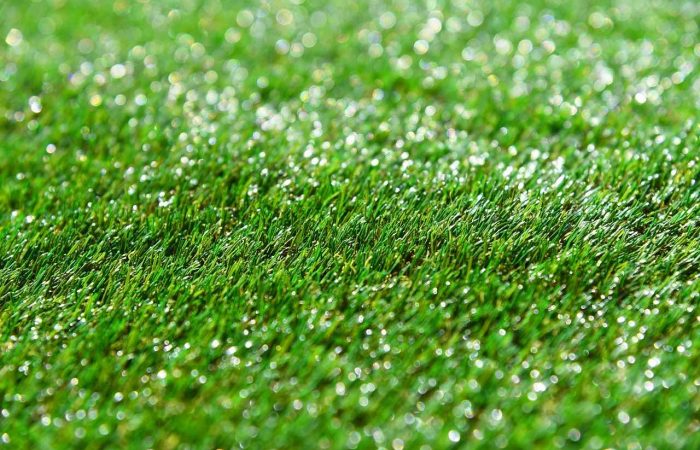
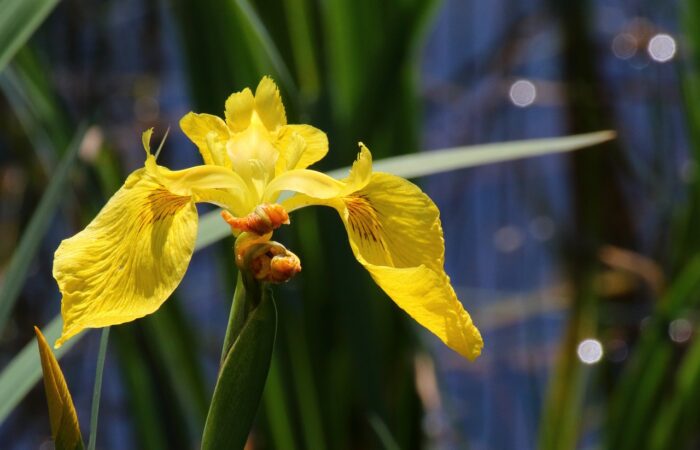
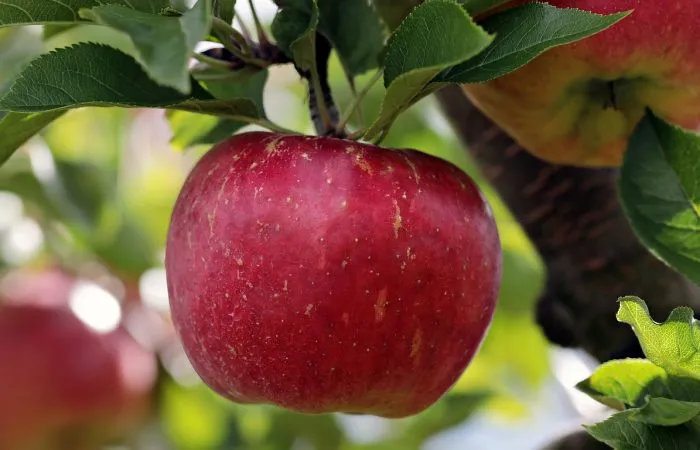
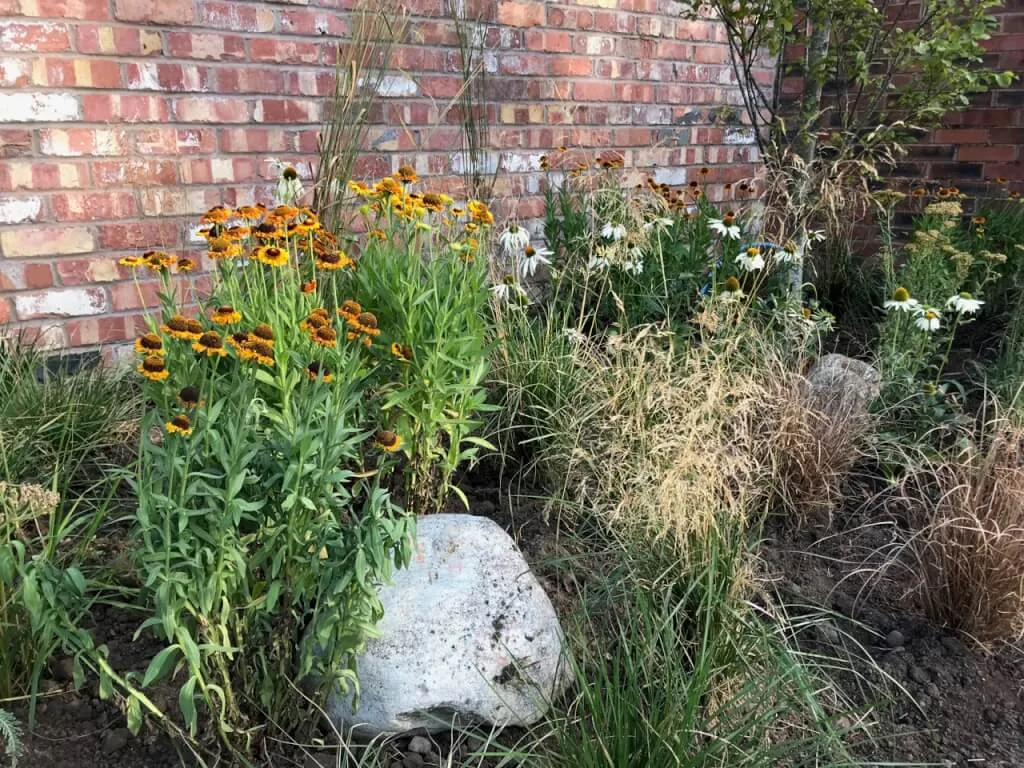
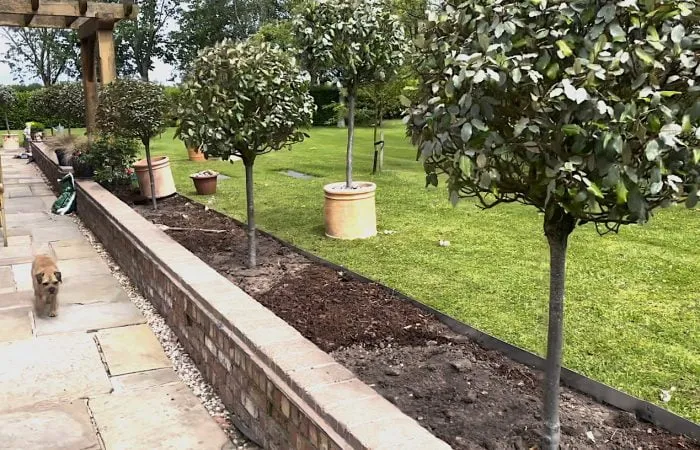
JOIN THE NINJAS

Be the first in line for new Guides, Discount codes and Offers
I’m reusing the compost I grew tomato plants in for planting a few daffodil and tulip bulbs. No idea if it will work but hey, I’ve done it now….!
My wife is a keen gardener and suggested we use our neighbours’ spent compost just like you wrote.
In the event there’s too much, I’ve told the neighbour I’ll take it to potholes in hard earth car parks which have been filled with stones by the council.
This should firm the stones and as it is mainly humus, should be less hospitable to weeds.